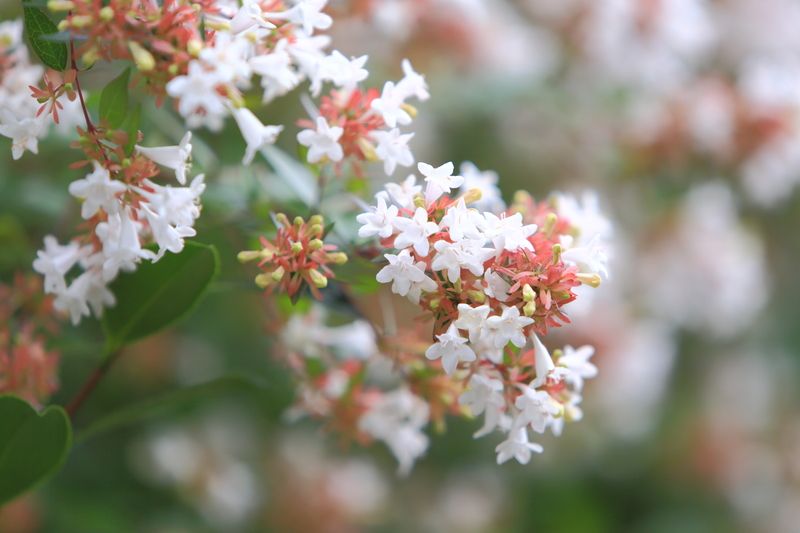Growing Together: Dogs and Gardens in Harmony
Posted on 02/07/2025
Growing Together: Dogs and Gardens in Harmony
Are you a proud dog parent and a passionate gardener? At first glance, these two pursuits might seem at odds: curious paws digging up flower beds, playful pups lying on your new vegetable patch, or the worry of toxic plants harming your beloved pet. Yet, it's entirely possible to grow a beautiful, thriving garden that complements your dog's happiness and well-being. In this comprehensive guide, we'll explore practical strategies for growing together--dogs and gardens living in perfect harmony.
The Joy and Challenge of Dogs in the Garden
For many, a garden is a sanctuary; for dogs, it's a place of adventure, exploration, and play. Reconciling these different uses for outdoor space can be challenging, but also rewarding. Before delving into solutions for harmonious coexistence between your dog and your garden, it's vital to understand the unique joys and problems each brings to the mix.
Why Dogs Love Gardens
- Sensory Stimulation: Gardens offer wonderful scents, sounds, sights, and textures that dogs love to investigate.
- Space to Play: The open expanse of a garden lets dogs run, jump, and play freely.
- Natural Behaviors: Digging, chewing sticks, sniffing, even chasing insects are normal canine behaviors a yard enables.
Gardening Challenges with Dogs
- Digging up prized plants and mulch
- Trampling seedlings and delicate beds
- Chemical exposure from pesticides or fertilizers
- Potential poisoning from toxic plants
- "Marking" with urine, which can cause lawn burn
Fortunately, with intentional planning and smart choices, you can create a space that supports both your gardening passion and your dog's well-being. Let's discuss how.

Planning Your Dog-Friendly Garden
Assess Your Dog's Needs and Behaviors
Not all dogs interact with gardens the same way. The first step for gardening with dogs in harmony is considering your dog's personality and breed traits:
- High-energy breeds (like terriers or retrievers) may need more space to play and a designated digging zone.
- Scent-driven dogs (such as beagles) may benefit from stimulating plantings and "sniffing trails."
- Older dogs might appreciate soft paths and shaded relaxation areas.
- Puppies may need extra supervision and training to avoid mischief.
Design with Dogs (and Plants) in Mind
Thoughtful garden design is crucial for fostering dog and garden harmony:
- Paths and Trails: Outline clear pathways with durable materials (like flagstone or bark mulch) for your dog to walk and run on.
- Play Zones: Dedicate a spot for fetch, digging pits, or sandboxes to steer rambunctious play away from delicate areas.
- Raised Beds: Position flower or vegetable beds at a height that discourages trampling and digging.
- Fencing: Use pet-safe, sturdy fencing to protect off-limits plantings or ponds.
- Shady Retreats: Plant fast-growing trees or shrubs for nap spots on hot days.
Choosing Dog-Safe Plants for a Beautiful, Safe Garden
A foundational aspect of growing together: dogs and gardens in harmony is choosing pet-friendly plants. Many popular garden plants are wonderful for humans but toxic to dogs if consumed. Aim to fill your garden with non-toxic, hardy plants for peace of mind.
Dog-Friendly Plant Choices
- Herbs: Basil, sage, rosemary, thyme
- Flowers: Sunflowers, snapdragons, marigolds, zinnias, roses
- Trees and Shrubs: Dogwood, crape myrtle, magnolia (flowers non-toxic)
- Groundcovers: Clover, creeping thyme, blue star creeper
- Grasses: Ornamental grasses that are resistant to trampling
Plants to Avoid (Toxic to Dogs)
- Lilies, tulips, daffodils
- Azaleas, rhododendrons
- Foxglove, morning glory
- Oleander, yew
- Tomato and potato leaves/stems
Always cross-reference plant safety with the ASPCA's Plant List for dogs to keep your furry companion protected and healthy.
Safe Gardening Practices for Dog Owners
Avoid Harmful Chemicals
The fertility and beauty of your garden shouldn't endanger your dog. Many commercial fertilizers, weed killers, and insecticides contain ingredients that are toxic to pets.
- Choose organic or pet-safe fertilizers and mulches
- Avoid cocoa mulch (contains theobromine, dangerous for dogs)
- Apply treatments when your dog is indoors and let affected areas dry completely before allowing access
- Store all garden chemicals out of reach
Mulch and Ground Cover Considerations
Select mulches like cedar, pine, or hemlock bark, which are generally safe and less tempting to chew than cocoa or rubber mulch. Mulch helps maintain moisture, reduces muddiness, and keeps paths paw-friendly.
Compost and Organic Waste Safety
- Keep compost bins enclosed and secure
- Avoid composting meat, dairy, or dog waste, which can attract pests and harbor pathogens
- Prevent your dog from raiding compost piles, which may contain mold or potentially toxic foods (like onions or grapes)
Building Good Habits: Training Your Dog to Respect the Garden
Dogs, like people, thrive with clear boundaries and routines. A big part of growing together: dogs and gardens in harmony is training your pup to enjoy the garden without causing chaos.
Tips for Training Success
- Supervise early on: Watch your dog closely and redirect unwanted behaviors immediately.
- Establish clear garden rules: Use consistent commands like "leave it," "off," or "no dig."
- Reward positive behaviors: Treats, praise, and extra play reinforce good choices.
- Discourage digging with alternatives: Offer a designated dig zone or sandbox.
- Use barriers: Temporary fencing, garden netting, or decorative low hurdles around beds deter entry without being an eyesore.
- Exercise before gardening: A tired dog is less likely to find mischief among your plants.
Enhancing Your Garden for a Happier Dog
Garden Features Your Dog Will Love
- Shaded Lounges: Thick shrubs or custom dog cabanas offer cool resting places.
- Water Features: From a splashy fountain to a kiddie pool, water-loving dogs enjoy playing and cooling off.
- Dog Play Structures: Agility tunnels or ramps add interest and keep dogs active.
- Digging zones: Fill a small area with soft sand and hide treats or toys for enrichment.
- "Sniffing Gardens": Plant durable, aromatic herbs and dog-safe flowers for sensory joy.
Minimizing Garden Damage
- Edge beds with sturdy borders (like brick, stone, or metal) to prevent trampling
- Select robust, resilient plants for borders--think lavender, sage, or ornamental grasses
- Keep a dog "run" along frequently traveled fence lines to avoid eliminating lawns with constant paw traffic
- Clean up messes promptly to keep lawns healthy and safe
Handling Common Garden and Dog Problems
Dealing with Yellow Lawn Spots
Dog urine can leave "burn" patches on grass. To minimize this:
- Train your dog to use a specific gravel or mulch area
- Water spots immediately with a hose to dilute urine
- Choose more urine-resistant grasses, like rye or fescue blends
Discouraging Garden Mischief
- Bitter sprays can deter chewing on plants or furniture
- Motion-activated sprinklers gently keep dogs away from sensitive beds
- More enrichment--rotate toys, try food puzzles, and provide more exercise to cut down on boredom-based digging or chewing
Safe Pest Management
Encourage natural garden pest controllers that are harmless to dogs, such as:
- Lacewings, ladybugs, and nematodes for insect control
- Neem oil, insecticidal soap, or diatomaceous earth (use with caution and follow safety guidelines)
- Fencing or nets to deter wildlife and protect produce
The Benefits of Growing Together: Dogs and Gardens in Harmony
Combining your passion for gardening with a dog-friendly approach yields surprising rewards:
- A healthier, happier dog thanks to exercise, stimulation, and a safe outdoor haven.
- A thriving, resilient garden managed with eco-friendly practices and robust plant choices.
- Strengthened owner-pet bond through shared rituals--watering plants with your pup, supervised play, and peaceful relaxation.

Frequently Asked Questions about Dogs and Garden Harmony
Can My Dog and My Garden Truly Coexist?
Absolutely! With the right garden design, dog training, and plant choices, growing together--dogs and gardens in harmony is achievable for households of any size.
What if My Dog Keeps Digging Up My Plants?
- Redirect to a designated digging area.
- Use physical barriers, garden edging, or netting to protect delicate beds.
- Provide lots of exercise and mental stimulation to prevent boredom.
How Can I Stop My Dog from Eating My Garden Plants?
- Eliminate toxic plants and replace with dog-safe varieties.
- Supervise outdoor time and use training commands like "leave it."
- Apply pet-safe deterrent sprays as needed.
Is Mulch Safe for My Dog?
Avoid cocoa or rubber mulches. Stick to pine, cedar, and hemlock bark, used in moderation. Always watch for chewing.
Conclusion: Start Growing in Harmony Today
Creating a space where dogs and gardens thrive together doesn't require giving up your green thumb or restricting your pet's joy. With thoughtful garden design, the careful selection of plants, safe gardening practices, and dedicated training, you can enjoy the best of both worlds. Start by making a simple garden plan that factors in your dog's needs, swap risky plants for pet-safe versions, and build garden habits together.
The rewards--a more beautiful garden, a happier, healthier dog, and a deepened sense of connection with nature and your pet--are worth every effort. So grab your gardening gloves and your dog's favorite ball, and begin the adventure of growing together: dogs and gardens in harmony today!

